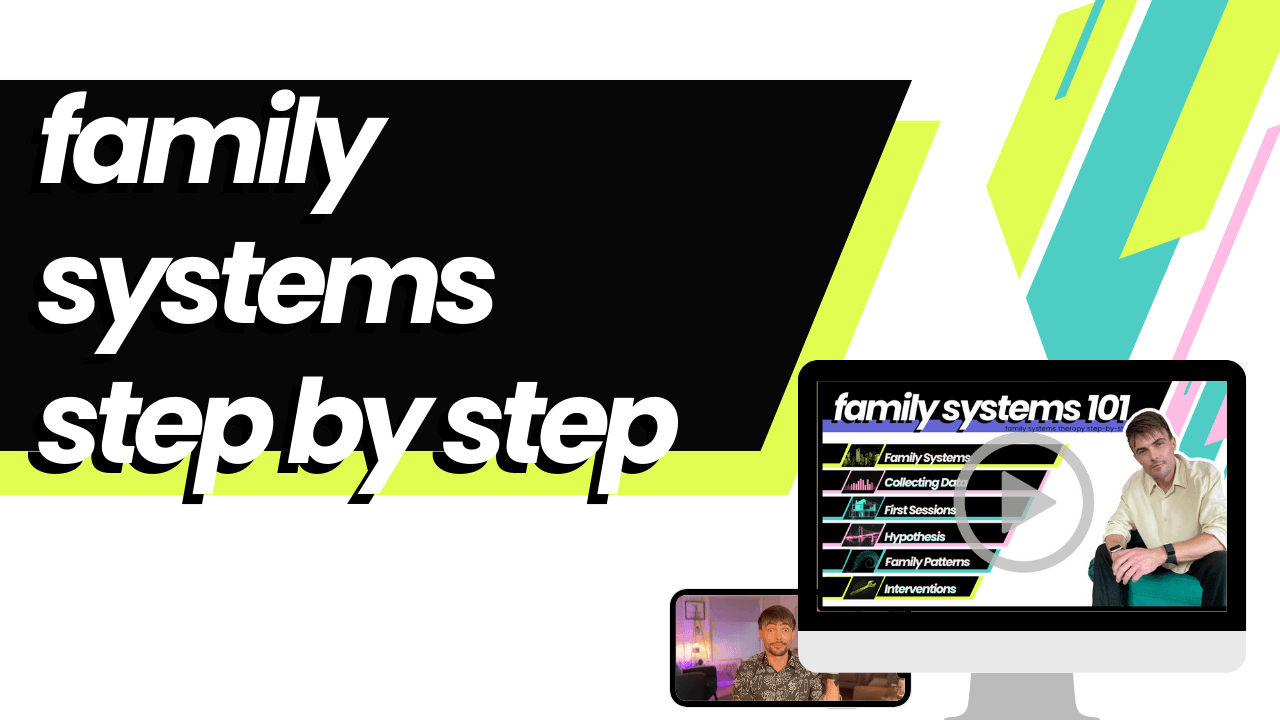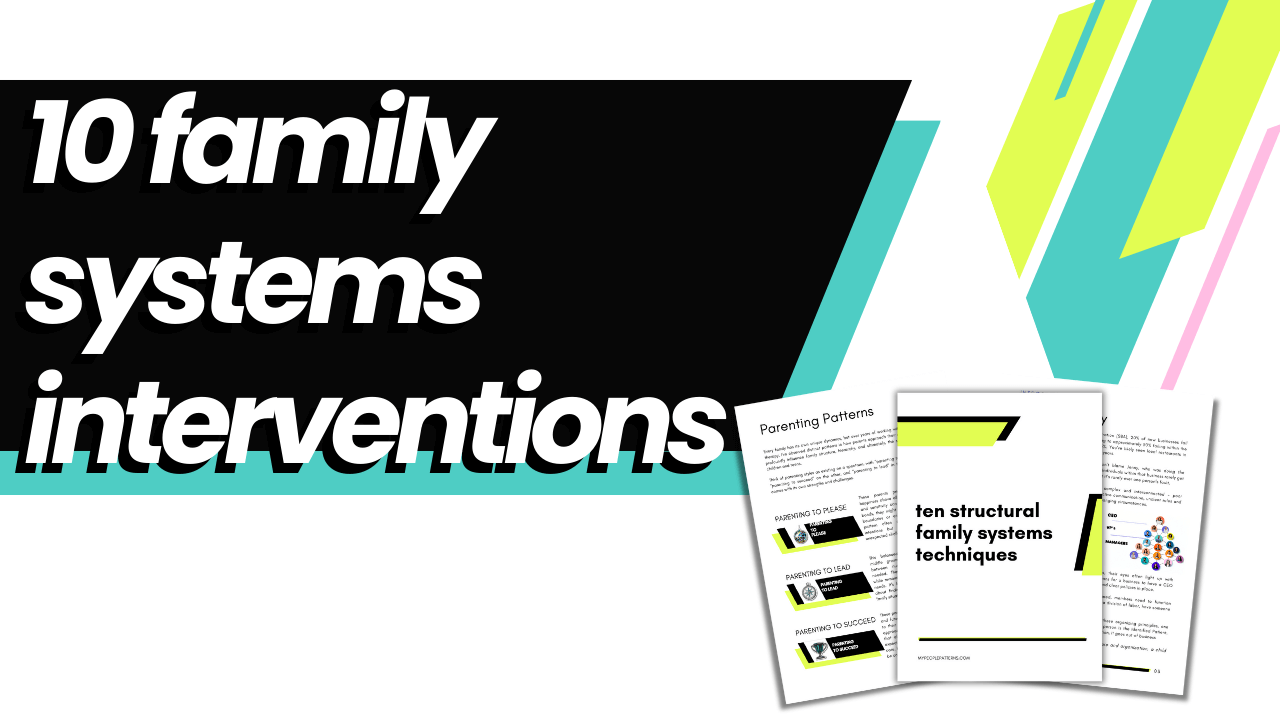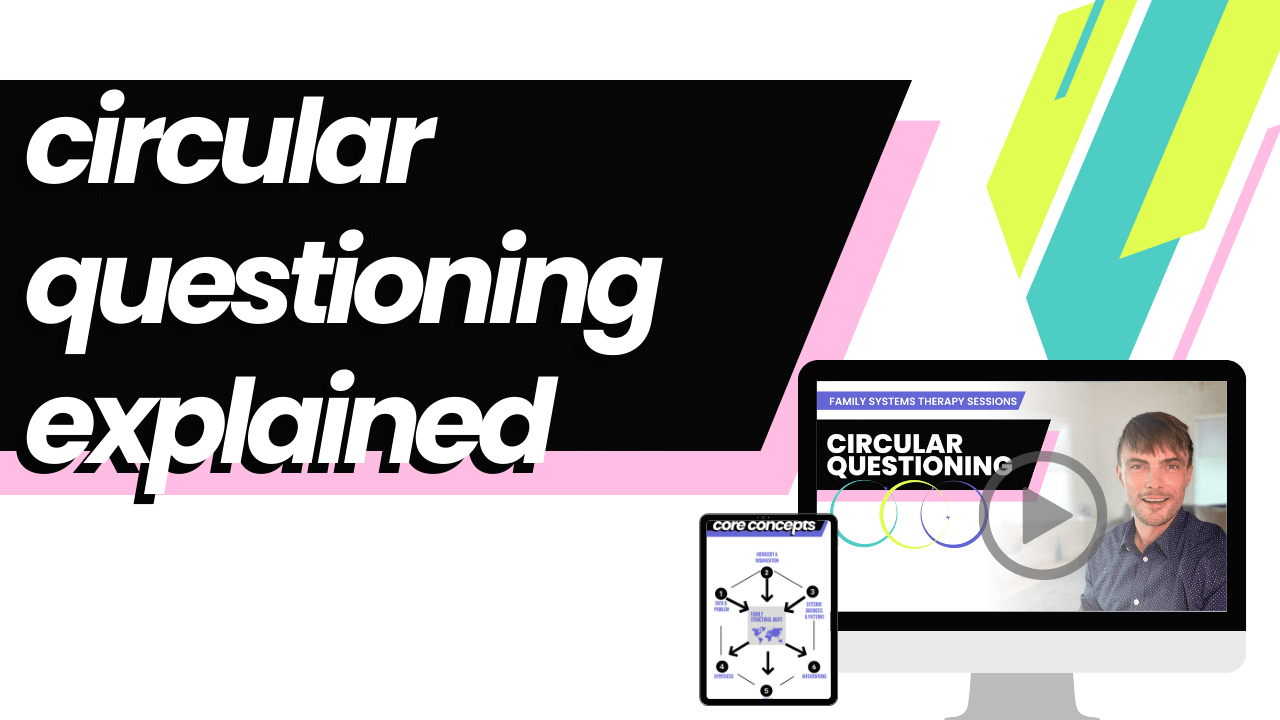Structural Family Therapy Mapping: Family Mapping Step by Step.
Family mapping is a powerful visual technique used in family therapy that helps therapists and families understand relationship dynamics, power structures, and emotional boundaries within a family system.

Unlike traditional family trees that simply show genealogical relationships, family maps attempt to capture behaviors - namely dysfunctional behaviors in the ways family members interact and relate to one another. It's a great tool I often share in treatment with families that answers questions and helps parents children and family members 'get' the ways they experience their home life.
I use family mapping as part of my process in structural family therapy (SFT) sessions, supervision and LOVE teaching other clinicians on how to use it so they can see how important family maps can be to help understand mental health issues in children and families. In this post I'll share with you some of the basics you may find useful along with other tools to support the way you help families, if you have the time you may want to check out the video.
Get the free PDF to accompany the video on Family Mapping here.
More Family Mapping!Origins in Structural Family Therapy
Family mapping emerged from the groundbreaking research of Salvador Minuchin and his observations of childhood and families that eventually became structural family therapy. Minuchin recognized that families operate as complex systems in and out of their home with distinct patterns of interaction, hierarchies, and boundaries. He developed family mapping as a tool to help visualize these intricate dynamics to understand and improve mental health and make them more tangible for both therapists and families.
Where traditional therapeutic approaches focused primarily on individual psychology, or childhood experiences, Minuchin's structural approach (SFT) emphasized understanding how family members at home organize themselves and interact as a cohesive unit. Family mapping became an essential technique to use in this practice, allowing therapists to create visual representations of these organizational patterns and relationships to show dysfunctional patterns that contribute to individual problems or symptoms.
Transform Your Family Therapy Practice with Advanced Family Mapping Course. $19.99
Unlock hidden family dynamics that traditional talk therapy misses with our comprehensive Family Mapping course. This powerful visual technique reveals hierarchies, boundaries, and unspoken rules by having clients physically arrange family representations, creating breakthrough moments when words fail.
- Master versatile approaches for individuals exploring family origins, couples unpacking relationship patterns, or entire families gaining new perspectives.
- You'll receive step-by-step implementation guides, downloadable resources, and real case demonstrations to immediately elevate your practice.
Whether you're new to family systems work or an experienced therapist, these accessible techniques will revolutionize how you identify subsystems, address boundary issues, and help families envision positive change.
Other Structural Family Systems Resources

Family Systems: Step By Step Course
If you want to learn more about SFT, in your practice, I think you'll find my online course a great way to better understand things. You'll learn how to use the same tools I use in private practice and when I used to run a treatment center.

Family Systems Interventions
I created a free e-book to give you the information you need to understand Structural Family Systems interventions. When you understand the theory and see how these interventions work, you're set to really help families.

Circular Questioning & Family Systems
If Family Mapping is the first step in understanding family work, then Circular Questioning is the next - they go hand in hand in a way to help you understand family dynamics in your clinical or social work when working with parents and kids

What Is Family Mapping? The Core Components
When we think about family maps, it's helpful to imagine that what you create is just a simple visual snapshot of a family's emotional and relational life. Just as a traditional map uses specific symbols to represent cities, roads, and terrain, family maps employ distinct elements to capture the complex dynamics of family life. This map may chane over time, so it's important to know it's likely to change as conflicts get resolved and you help find new ways to get the fammily to support and connect.
The Building Blocks
Squares represent individual family members, making them the fundamental units of any family map. While this might seem basic, the beauty lies in how we can start using these squares to convey additional information about people in the family.
- Different sizes can represent perceived power or influence within the family
- Colors can add another layer of meaning, though interpretations should be discussed with the family
- Names or initials inside the squares help identify family members
- Ages can be included when relevant to understanding developmental stages
- The person in the family with 'the problem' either mental health or behavioral symptoms is known as the Identified Patient, or the IP.


The Space
The physical distance between elements on a family map represents emotional closeness or distance in relationships. This aspect of mapping helps visualize:
- Emotional closeness between family members
- Alliances and coalitions
- Disengagement patterns
- Over-involvement or enmeshment
For example, two squares placed very close together might indicate an enmeshed relationship, while elements placed far apart suggest emotional distance or disengagement.
Boundaries
Boundaries in families are like invisible fences that regulate emotional closeness and interaction patterns. Family mapping makes these invisible boundaries visible through different types of lines:
- Solid lines represent healthy boundaries - clear rules and expectations with appropriate flexibility
- Dotted lines indicate porous boundaries - too much emotional spillover between family members
- Double lines show rigid boundaries - excessive emotional distance or inflexibility
When drawing these boundaries, we typically surround subsystems or connect individual members. For example, a solid line around parents might indicate a healthy marital subsystem, while dotted lines between a parent and child might suggest enmeshment.


The Subsystems
Every family contains multiple subsystems – smaller groupings that serve specific functions. The three primary subsystems are:
- The Spousal/Partner Subsystem: The adult relationship that forms the foundation
- The Parental Subsystem: Adults in their role as caregivers
- The Sibling Subsystem: Children's relationships with each other
Family maps help visualize these subsystems by grouping relevant members together and showing the boundaries between groups. This allows us to see how well each subsystem functions and maintains appropriate boundaries with other parts of the family.
Power and Hierarchy:
Power dynamics in families are represented through the strategic positioning of squares on the map – typically, the higher up an element appears, the more power it holds in the family system. This helps identify whether the family has:
- Appropriate hierarchical structure (who is in charge)
- Inverted hierarchy (children wielding too much power)
- Power struggles between subsystems
- External factors dominating family life
A functional family map usually shows parents at the top level, working together to lead the family, with children at lower levels according to their developmental stages.

When to Use Family Mapping:
First Session Assessment
When a family first enters therapy, mapping can be an invaluable and strategic tool for understanding their current dynamics and structure. I use it often to capture my impressions of the family and to formulate my hypothesis, other therapists use this as form of process notes to keep track of relationships interactions.
Picture a scenario where parents bring their teenager in for "behavioral issues." As the family settles into your office, you notice the son sits between his divorced parents, and mom frequently speaks for him while dad remains quiet and distant.
Creating a family map in this moment captures vital information about hierarchy, boundaries, and alliances that might be contributing to the presenting problem.
The map becomes a baseline assessment tool, showing how the son's position between parents might reflect emotional triangulation, while the communication patterns suggest possible boundary issues between mom and son.
When You're Stuck
Sometimes therapy reaches a point where progress seems to stall. In these moments keeping positive is hard in social work or therapy and you might be aware that members may be losing faith, or perhaps families may start dropping out of treatment.
Creating a new family map with individuals can be a strategic way to reveal subtle changes that have occurred or highlight persistent patterns maintaining the problem. Imagine working with a family where despite months of therapy, the teenage daughter continues to have angry outbursts.
An SFT map might reveal that while the caregivers relationship has improved, they're still triangulating their daughter into their conflicts in subtle ways.The visual representation helps the family see strategic patterns they might miss in regular conversation, creating new opportunities for therapeutic movement. Comparing current and past maps can help the family recognize progress they've made and obviously the therapists help highlight areas still needing attention.
As A Family Therapy Activity
I have found that including the family in creating a family map has a great impact in engagement and as a tool to explore anything from communication to conflict. It can provide you with several opportunities to understand the family, and create a bit of a community vibe or therapeutic alliance. Some therapists work with the family to create them together and other therapist may ask family members to do them one at a time and share with each other.
What's An Example Of A Family Map?
This is a decent example of a family map that shows an family map that's gone askew. You can find out a lot more in the video below.

Mapping the Peterson Family
At first glance, the Petersons appeared to be a loving and supportive family. However, a deeper analysis of their interactions uncovered significant structural imbalances:
-
Parental Hierarchy Imbalance – The Mom held dominant control over family decisions, making her the over-functioning "superparent." She scheduled the therapy session, directed seating arrangements, and led the conversation about their son’s behavior. The father (Alan), in contrast, played a more passive role, reinforcing an imbalance in the parental subsystem.
-
Sibling Roles and Differentiation – The family had created a stark divide between their two adopted children:
- Jenny (11) was positioned as the "golden child" who required additional care due to developmental needs. She rarely faced discipline, and her misbehaviors were either excused or ignored.
- Jimmy (12) was labeled as the "identified patient" (IP), meaning the family focused on him as the source of their problems. His persistent lying became the central issue, and he faced escalating, inconsistent punishments, reinforcing his role as the "problem child."
-
Physical and Emotional Distancing – The family's seating arrangement during therapy reflected their emotional structure. The parents and Jenny sat together on one couch, while Jimmy was isolated on another, symbolizing his exclusion from the family unit.
Using Family Mapping for Change
By identifying this information and putting it in a family map, it becomes much clearer what to do with regards to treatment plan and family therapy interventions.
It's much more clear now that the work should be focused on restructuring the family's approach to discipline, shifting parental dynamics to be more balanced, and reducing the disproportionate focus on Jimmy. The goal was to move from a punitive, chaotic system to a fair, structured approach where both children were treated equitably, and both parents took active roles in discipline.




